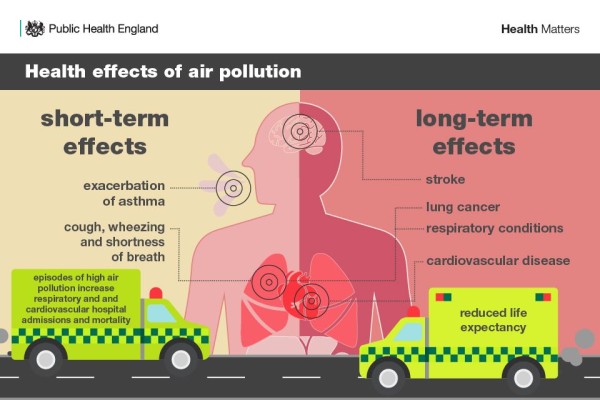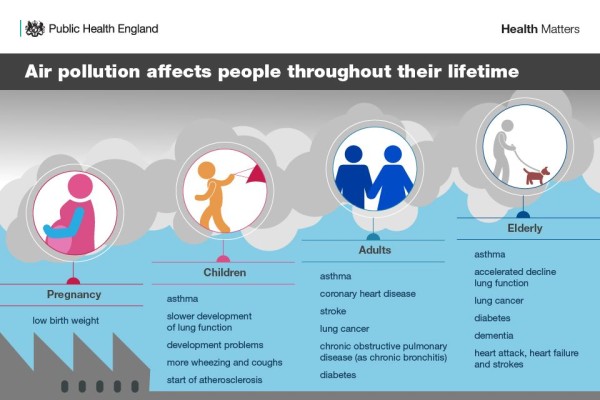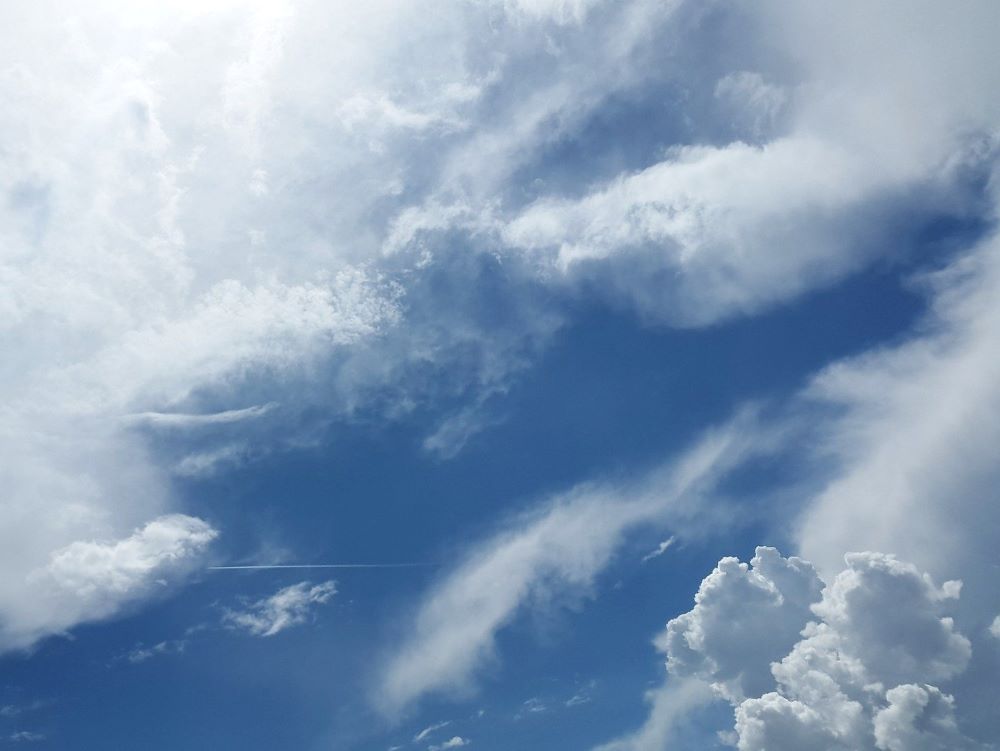Our role
Toi Te Ora Public Health is responsible for the investigation and surveillance of complaints of chemical or hazardous-substances injury, and notifications of poisoning arising from chemical contamination of the environment (referred to as chemical exposure incidents) in non-occupational settings.
Medical practitioners are legally required to notify Medical Officers of Health of ill health suspected to have arisen from a hazardous substance or poisoning from contamination of the environment. This includes harm caused by air quality. Speak with your doctor if you have concerns or symptoms arising from air quality.
When suspected cases are notified to the Medical Officer of Health these are investigated to identify the source of exposure to prevent other people from being harmed.
Air quality in Mount Maunganui
There have been longstanding community concerns about air quality in the vicinity of Mt Maunganui and the Port of Tauranga, including the Whareroa Marae community.
In 2022, Toi Te Ora commissioned two reports from Emission Impossible on behalf of the Institute of Environmental Science and Research Ltd (ESR) to investigate the air quality in the Mount Maunganui area.
Here are the links to the full reports which were released on 24 July 2023:
- Air Pollution: Health Risk Assessment Mount Maunganui
- Mount Maunganui Air Quality Monitoring Review 2022
What are the health risks of air pollution?
The impacts to health of air pollution may be from short-term (acute) or long-term (chronic) exposure. Short-term exposures cover minutes, hours, or days. Long-term exposures are usually over months or years. The major impacts of air pollution occur due to chronic exposure.
Air pollution can irritate the eyes, throat, and lungs. Burning eyes, cough and chest tightness are common with exposure to air pollution. These health effects can cause increased respiratory hospitalisations to increased death.
People who have heart disease, such as angina (chest pain), or lung disease, such as asthma or emphysema, may be very sensitive to air pollution exposure, and may notice symptoms when others do not.
The potential health effects associated with air pollution are illustrated below.

Source: Public Health England, https://www.gov.uk/government/publications/health-matters-air-pollution/health-matters-air-pollution
Visible and larger dust particles (greater than PM10) can cause irritation. In addition, nuisance dust may reduce the amenity of peoples’ surroundings and impact on their sense of wellbeing. While individuals can take steps to avoid visible dust and are able to raise their concerns, the appropriate authorities have a role in managing visible dust if it is a nuisance as well as the dust and other pollutants we can’t see.
Who is the most vulnerable to air pollution?
There are inequities in who is likely to be exposed to air pollution than not, and who will be affected more when they are exposed. We refer to this population as the most vulnerable groups to air pollution. These populations are:
− people 65 years and over
− pregnant people
− children
− communities with poorer air quality, e.g., those situated close to industry and ports
− people with cardiovascular disease and/or respiratory disease.
The more vulnerabilities a population has, the greater the health impact.

Source: Public Health England, https://www.gov.uk/government/publications/health-matters-air-pollution/health-matters-air-pollution
Air pollutants of most concern to health?
Air pollution comprises a complex mixture of gases and particles. This means it is not possible to measure or assess the effects of all the individual components of air pollution, so only key pollutants are focused on.
In New Zealand, the pollutants of most concern are particulate matter (dust) smaller than 10 micron and nitrogen oxides, particularly nitrogen dioxide.
All particulate matter irrespective of size can harm health. Particle size however is important because it dictates the extent the particle is transported into the body and the ability for the body to remove it which determines the health impact when inhaled.
Air pollution sources
The sources of pollutants that are of most concern to health are;
- particulate matter smaller than 10 micron arising primarily from domestic fires but also diesel fuel combustion, brake/tyre wear and road dust.
- nitrogen oxides, in particular nitrogen dioxide emitted primarily from diesel and petrol fuel combustion.
Transport and home heating are two common sources of air pollution in New Zealand however sources are wide and varied. Some common forms of air pollution come from manufacturing processes and combustion processes such as fuel burning wood burning, chemical processing, paints, household cleaning agents and agrichemicals.
The main sources of particulate matter in New Zealand are home heating, industry, agricultural practices, road dust and sea salt. The main anthropogenic (human caused) sources of particulate matter in New Zealand are domestic fires, motor vehicles and industry.
Less common natural sources include volcanic activity, particularly eruptions which emit sulphur dioxide and ash.
National Environmental Standards for Air Quality
The National Environmental Standards for Air Quality set a guaranteed minimum level of health protection for all of New Zealand. The ambient air quality standard for a contaminants must not exceed its threshold concentration in an airshed unless the exceedance is a permitted by the standard. There are 5 standards for ambient air quality- carbon monoxide, nitrogen dioxide, ozone, particulate matter (PM10) (dust), and sulphur dioxide.
The National Ambient Air Quality Guidelines set concentration limits to promote sustainable management of the air resource in New Zealand. Coupled with global air quality guidelines published by the World Health Organization, these guidelines provide concentration limits for the protection of human health. When these limits are not met, health is being harmed. Factsheets on World Health Organisation (WHO) Air Quality Guidelines can be found below under ‘further information’
The standard and guideline limits are not considered targets. This is because there is no safe level for human health for some of these contaminants. To be protective of health, air quality must continually be improved and surpass standard and guideline limits.
Regional councils are responsible for carrying out environmental monitoring of air quality against National Environmental Standards. Regional councils are required to identify areas where air quality is likely, or known, to exceed the standards – these areas are known as airsheds.
Regional councils must give public notice if the ambient air quality standard for a contaminant is breached in an airshed in its region. To learn whether ambient air quality meets the standards for the protection of human health in the Bay of Plenty, head to Bay of Plenty Regional Council website and the Waikato Regional Council website for the Taupō area.
When an airshed is identified polluted, it will remain polluted until there is no breaches for five consecutive years.
Improving air quality
Air pollution affects everyone, and improved air quality will benefit everyone.
An updated health and air pollution in New Zealand study which evaluates the effects of air pollution on human health across New Zealand and the resulting social costs estimated anthropogenic (human-made) air pollution in New Zealand was responsible for:
- the premature deaths of more than 3,300 adult New Zealanders
- more than 13,100 hospital admissions for respiratory and cardiac illnesses, including 845 asthma hospitalisations for children
- over 13,200 cases of childhood asthma
- approximately 1.745 million restricted activity days (days on which people could not do the things they might otherwise have done if air pollution had not been present)
- and social costs of $15.6 billion per year.
Our knowledge about the harmful effects of air pollutants is growing. This has led to many health-based emission limits being tightened in recent years. Some pollutants also have no level which is safe for human health. Therefore, the air we breathe must be continually improved to achieve best outcomes for everyone’s health.
Because there is no practical way of treating or cleaning ambient air like we can treat water for drinking, the most proactive approach is to prevent harm from the outset. By this we mean that human-made emissions to air need to be effectively controlled at source or not produced.
For more information the report may be found here; Health and air pollution in New Zealand 2016 (HAPINZ 3.0): Findings and implications | Ministry for the Environment
Reducing transport emissions
The health impacts of transport emissions are considerable. In New Zealand, air pollution from motor vehicles alone is estimated to cause 2,247 premature deaths and nearly 9,400 hospitalisations annually.
The targets of Te hau mārohi ki anamata, Aotearoa New Zealand’s first emissions reduction plan. This document includes four transport related targets. To achieve these targets motor vehicle greenhouse gas emissions, need to reduce by approximately 41% by 2035 compared with 2019, and the transport sector needs to be largely decarbonised by 2050.
Toi Te Ora promotes active and public transport. A well-designed transport system will contribute to improved health outcomes through a range of mechanisms, including reduced carbon emissions, improved air quality and increased physical activity.
Toi Te Ora supports strategies and initiatives that increase the provision and use of active transport in our communities because active transport results in a broad range of everyday convenience, health and environmental benefits for individuals and the population.
Further information and resources
Health education resources
Agri-chemical spray drift – reducing risks and taking action
Regional councils
Te Whatu Ora – Health New Zealand
ESR (Institute of Environmental Science and Research)
ESR investigate the pollutants in our environment like transport and agriculture emissions that can cause health risks. Reports related to air quality are available
Environmental health reports | ESR include;
- Air quality-related public health impacts from land use and transport: Literature review
- Public Health Risk associated with Transport Emissions in NZ: Part 2 Road Transport Emission Trends
- Public Health Risks associated with Transport Emissions in NZ: Part 1 Stocktake and Gap Analysis
Environmental Health Intelligence New Zealand.
- Environmental Health Indicators New Zealand - Air quality provides data and statistics about air quality and health in Aotearoa New Zealand. To find out about sources of air pollution, levels of air pollution, and human health effects go to.
- Environmental Health Indicators for New Zealand 2008
Contact us
Our Health Protection Officers provide information and advice to other agencies, businesses and the public on the adverse effects of poor air quality. Health Protection Officers also investigate complaints and notifications of hazardous substance and chemical poisoning by medical practitioners. Contact us for more information.
Updated 18 July 2023







